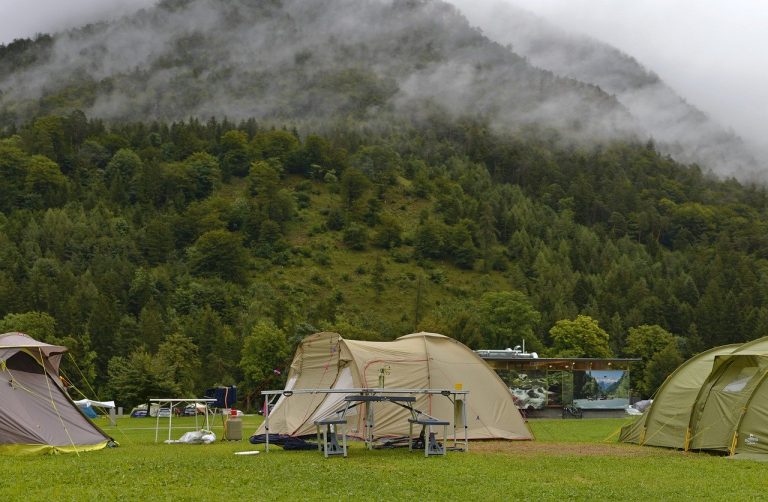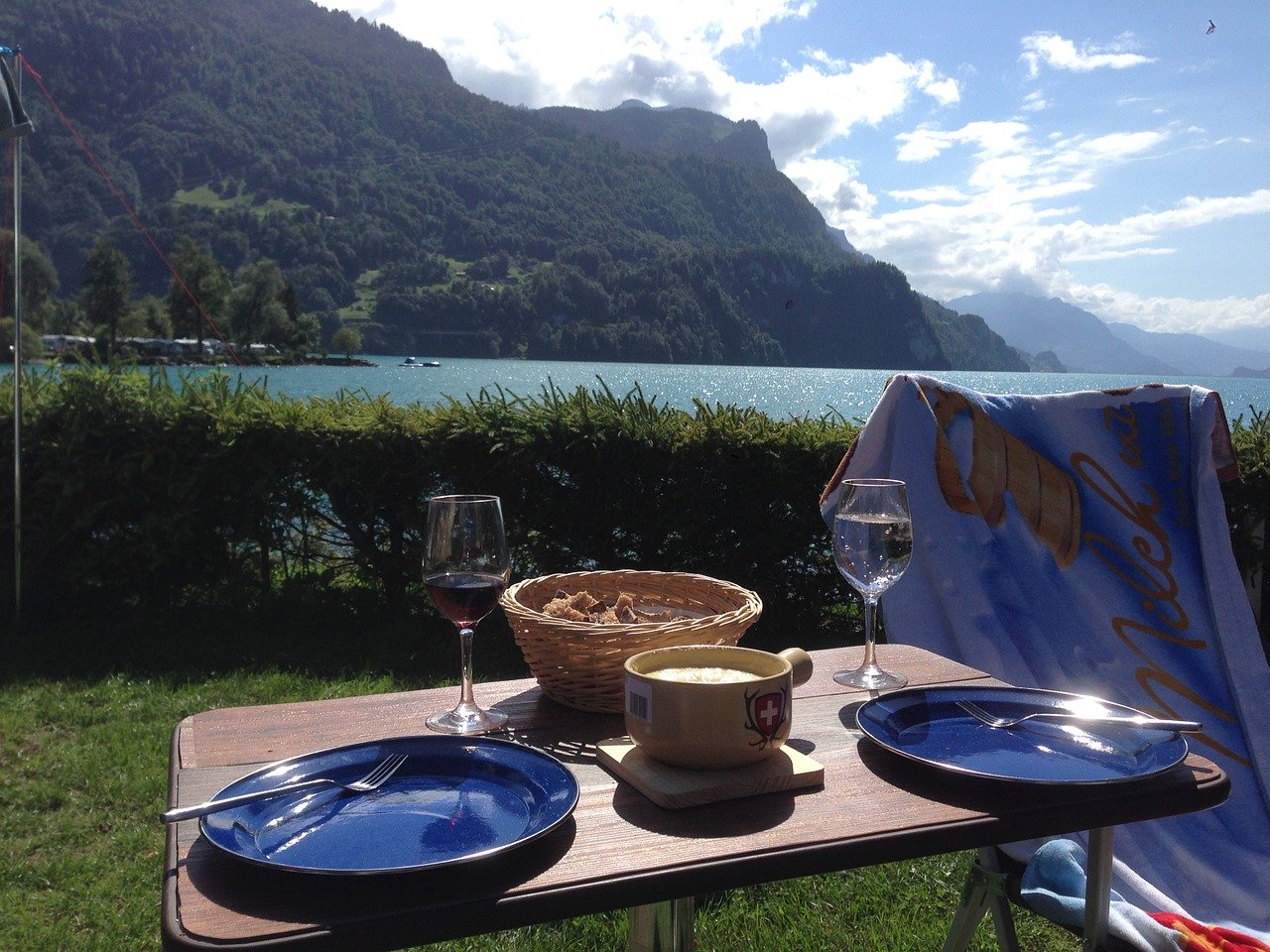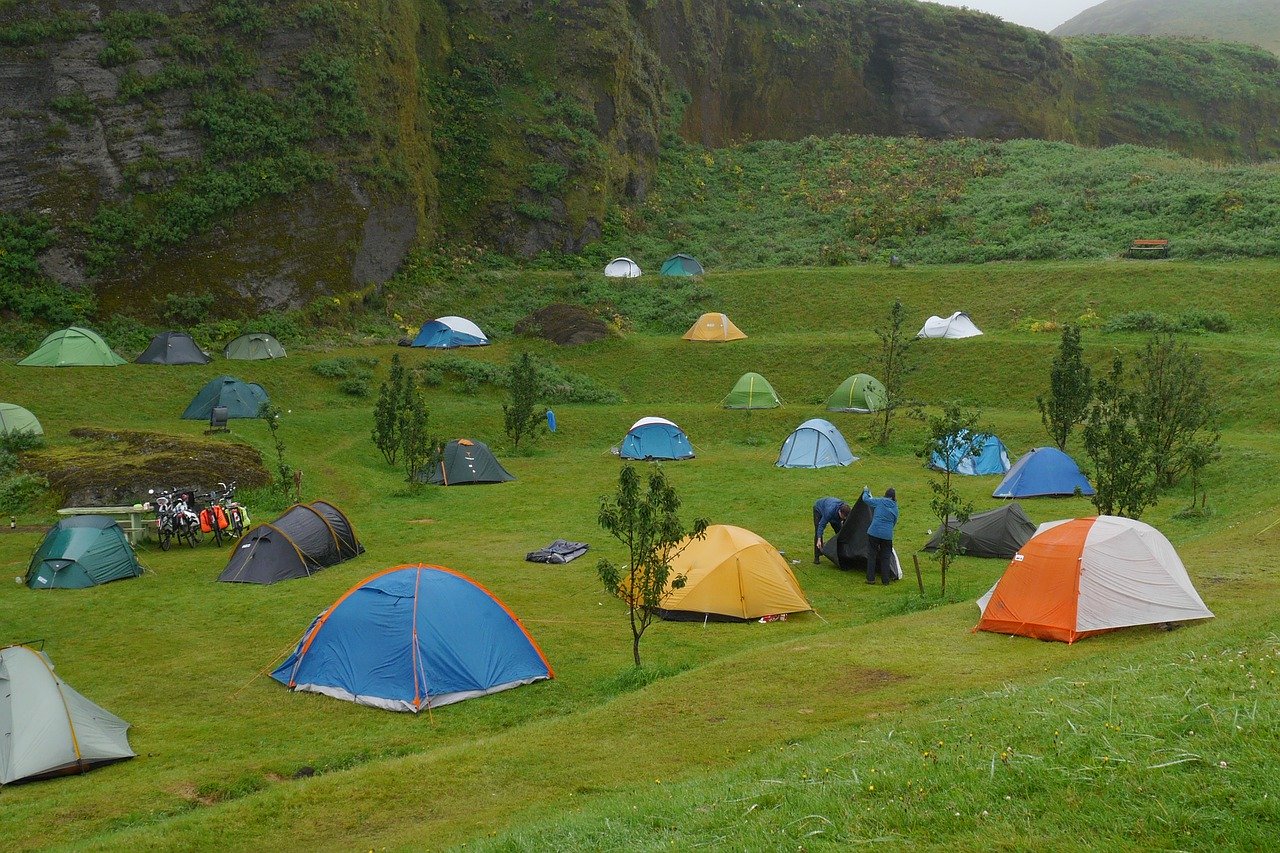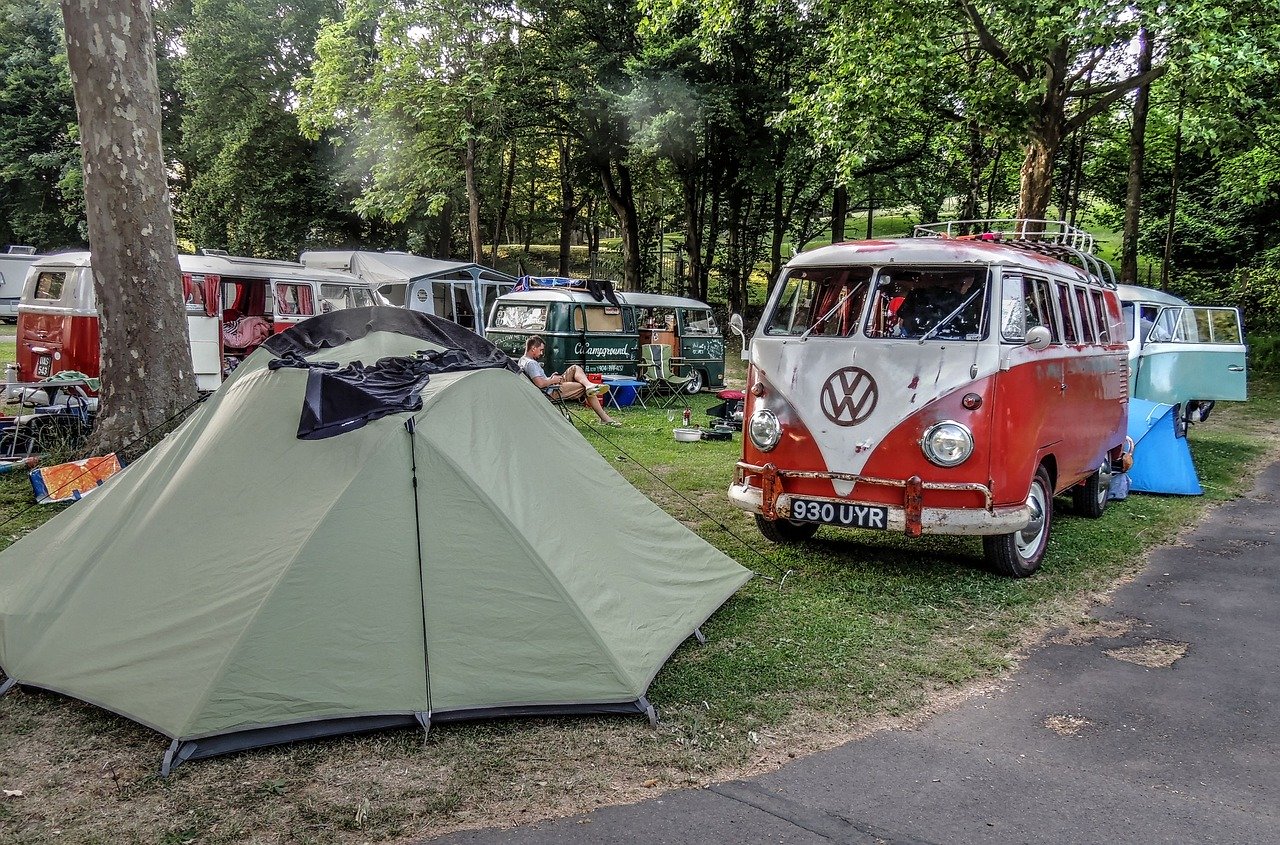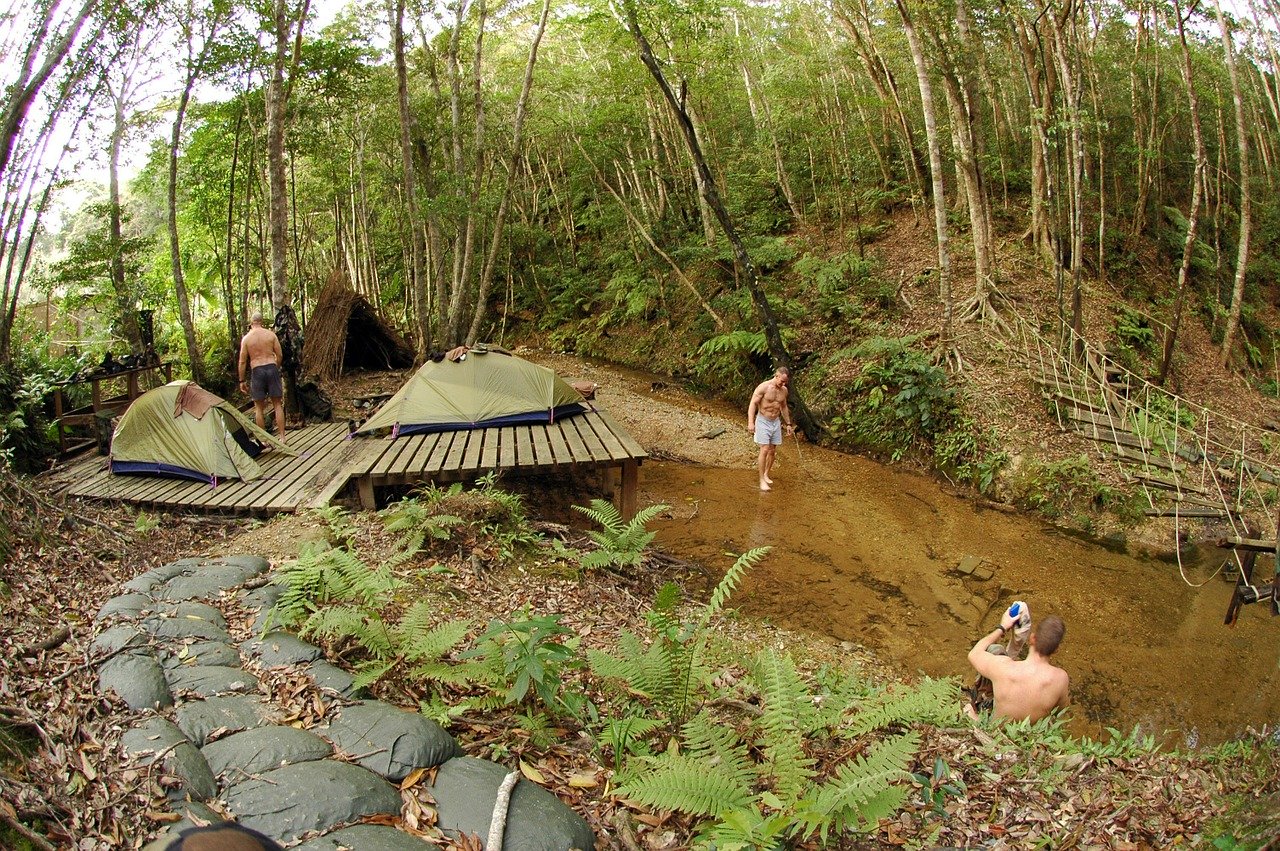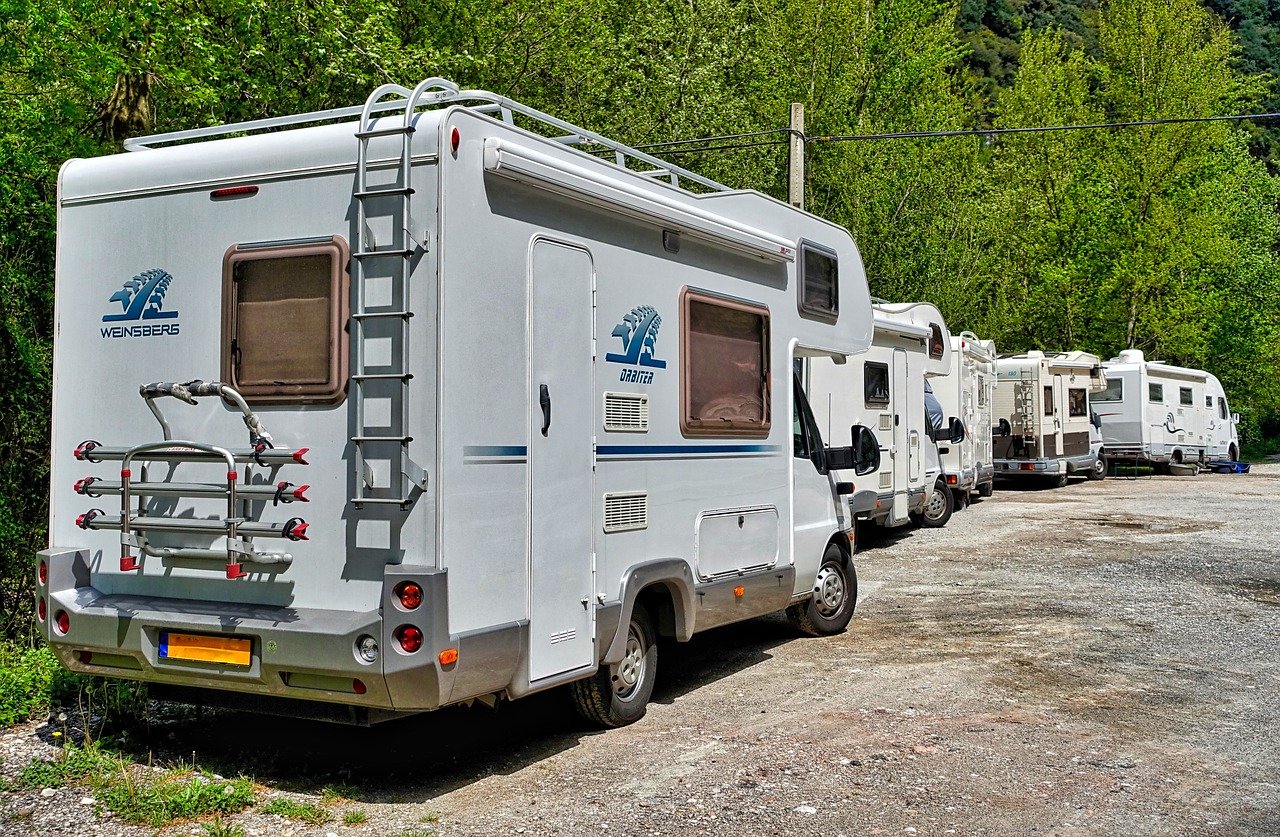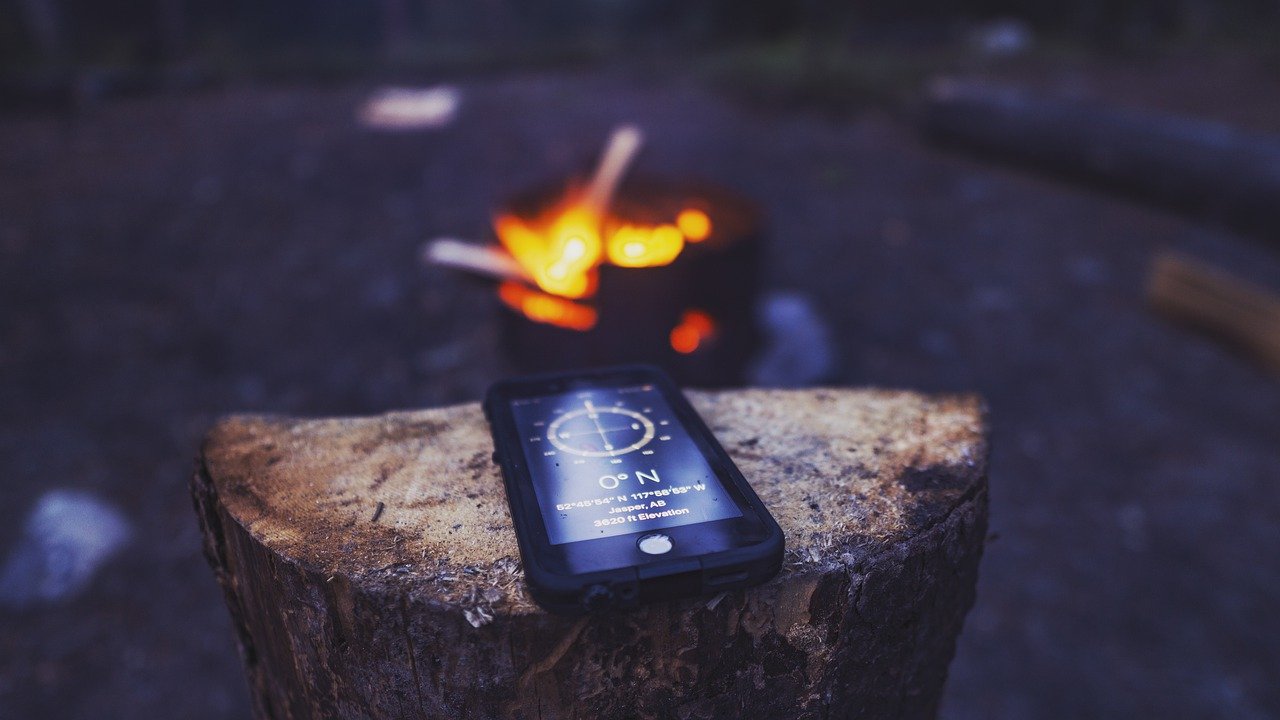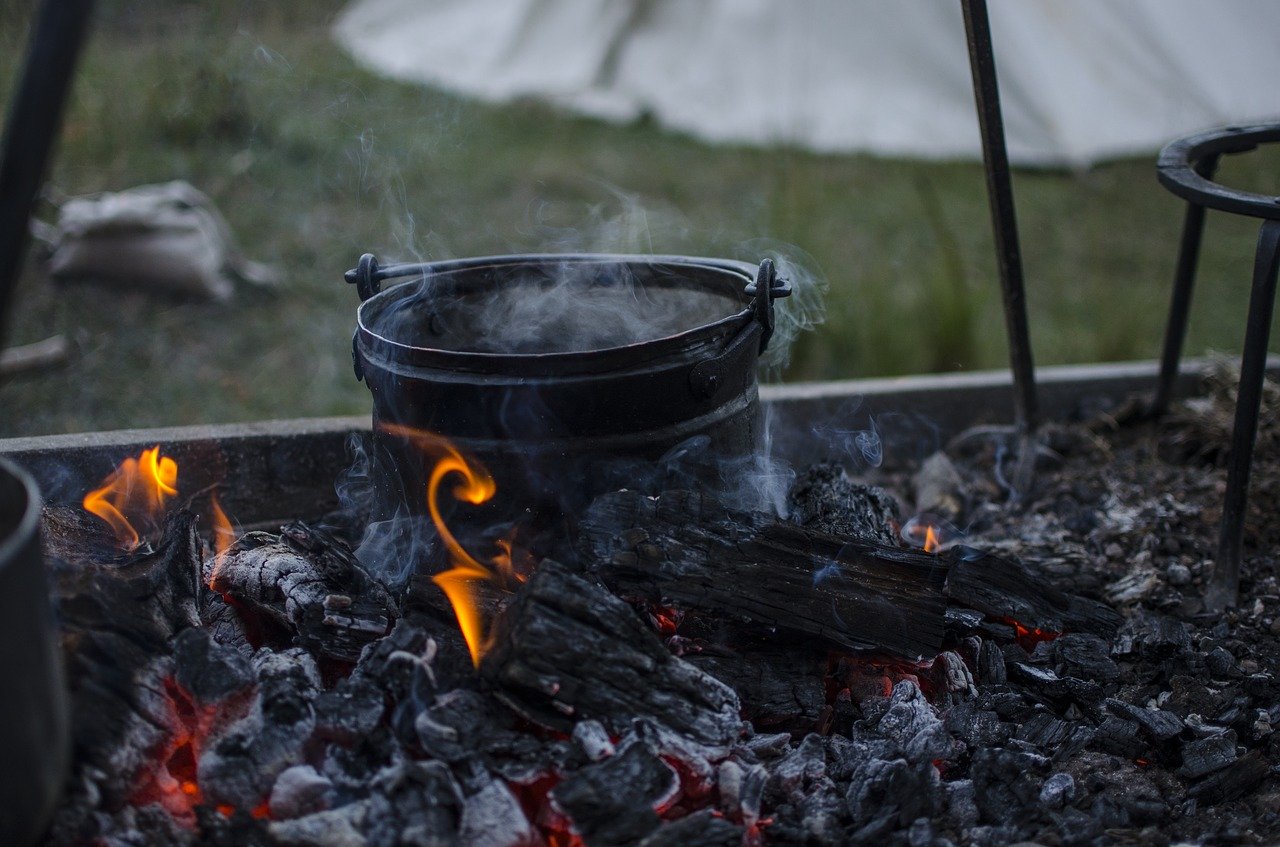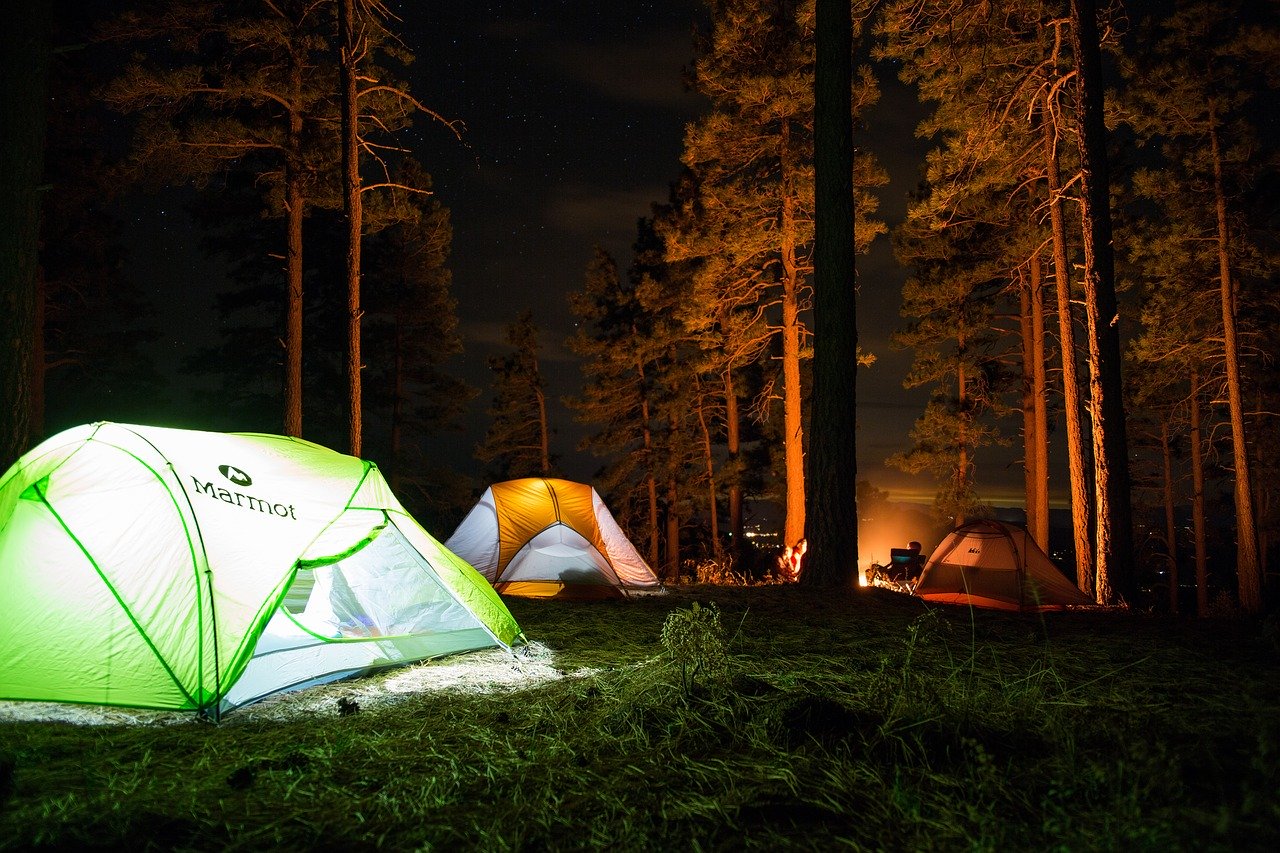For many of us, camping for free sounds “too good to be true”. When most of us hear about a free offer we often think of the reasons why. A free service is generally sub-par and in most cases, there are hidden fees that come along with it. Or competitive levels are so high, most people don’t see the worth in waitlists and long lines.
Yet when it comes to camping, there are many free options available. 28% of US land is in fact, federally owned which means you can camp on it for free. And yes, it is completely free to camp in these spaces.
It’s a fantastic choice for those looking to save a bit of money for their next adventure. Before you begin looking for a free camping spot, you should be aware of what to expect.
The ideal method to make sure your camping experience turns out as well or maybe even better when compared to the camping sites that you have to pay fo involves a bit of planning and coming prepared.
We like to encourage people to get outdoors. Money should not be standing in your way when it comes to enjoying nature to its fullest. Here is our complete guide that you can use to prepare your next free camping trip across the U.S.
What Is Free Camping?
Boondocking, dispersed camping, free camping, or any other name you would like to use, essentially all mean one thing: camping in a spot with zero or limited amenities for free.
If you are used to fire rings, bathrooms, and picnic tables, then free camping might mean you need to step out of your usual comfort zone.
Some of the dispersed campsites feature established fire rings or tent pads, but many don’t. If you come across a site that offers these amenities, you have found a great campsite.
Reasons to Take Advantage of Free Camping
Perhaps you go camping all the time and you always pay to camp. You know which campgrounds you like, and you are prepared to pay the fees for the amenities on offer.
Or maybe you have never gone camping before and you would prefer to stick with a paid camping spot.
Below are 4 great reasons to give camping for free a chance.
Keep More Money In Your Pocket
The most common reason to camp for free has to do with saving money. Depending on the spots where you usually camp, these fees can add up quickly.
Some of the private campgrounds are known for charging $80 or more for a night for the sites that come with full hook-ups. Some campsites will charge extra for each person. This often makes it harder for large families.
Even the public campgrounds charge $15 to $20 a night for basic tent sites that do not come with any hookups. This may not seem like much, but when you are staying on a campsite for a week, the costs start to add up. This especially true for people that plan to travel long-term or those on an extended road trip. Paying for a campsite every night can become extremely pricey.
Free campsites allow you to spend your cash on other items like activities, food, or gas (especially when you are driving a camper or RV).
An Easy Way to Find Solitude
Free camping experiences are generally untouched by most of the public. Because many people prefer private or public paid campgrounds, free spots are usually very quiet.
Many people compare free camping to survivalist experiences, and this is what deters many from trying. The drawback is that there are so many people that don’t even know that they can camp for free or people that are not open to roughing-it. So what’s the good news? For the people that are prepared to try, they get to enjoy solitude and peace.
If you are interested in loads of space between other campers, or even the next town, then free camping might be a great experience for you. Many of the areas are really remote, and these are visited a lot less frequently and they are not well advertised.
Yet do not expect that every free camping spot is going to provide this much peace. But there are also many areas that you might end up been the only campers around.
It’s a Lot More Adventurous
Many people that enjoy camping also enjoy the adventure side of these experiences. Even when it just involves getting away from the suburbs for a night or two. The free camping spots are usually more adventurous when compared to the traditionally paid campgrounds.
Most of the free areas are really remote, are hike-in, rarely visited, or require 4 wheel drive. These free camping spots are also lacking when it comes to amenities such as hook-ups and toilets. Campsites are also rarely monitored by personnel or rangers, and many are also undefined.
While there are a few challenges associated with free camping, be sure there are many things that make up for these setbacks.
When camping at a remote and free camping site take the time to look up and take in the beauty of the stars. Without any light pollution that comes from neighboring cities and towns, the view is crystal clear.
Take advantage of taking hikes around the area. There is definitely something exciting about exploring areas that not many people have discovered before.
You can also experiment with your survival skills. This could include cooking over a fire, digging a pit toilet, and filtering water.
It is also important to follow the leave-no-trace principles along with adhering to campsite safety.
Free Camping Is Ideal for Free-Spirits
Camping was once a means to get into nature and pitch a tent. Today, camping now often translates into having to share the experience with 100’s of other campers for a loud and rowdy weekend. Camping over the years has become extremely popular as it is the most economical option to take a vacation.
Even though it is great for people to enjoy the natural world and to get outside, this is often coupled with a crowd of other people. In most cases, the campgrounds that offer the most amenities, are also the most crowded. This also means the campsite needs to be reserved well in advance.
There are private campgrounds that start taking bookings as far as a year sometimes 2 in advance, especially over the months of summer. Even the public campsites are booked weeks or months in advance in the peak seasons.
The popular national or state parks are booked up 6 to 12 months ahead of time, especially over the tourist season.
This why free camping grounds are the ideal solution for spontaneous campers. When you decide to go away for the weekend, you won’t have to make a reservation ahead of time.
Since most free campsites are not frequently used, you won’t have to arrive early in order to secure a spot or have to share your space with many other campers.
In general, you can make these plans at the drop of a hat. Yet we still advise that you do a bit of research online since there can be an exception to these rules. A few of the more popular and smaller camping sites work on a first-come-first-serve basis so they will fill up fast.
Types of Free Camping
Dispersed Camping or Boondocking
Dispersed camping or boondocking is an interchangeable term. Boondocking refers to camping on public undeveloped land without bathroom amenities or hookups.
Dispersed camping happens to be a popular option for the RV community since these motorhomes are already self-contained. Rugged campers and van lifers also use these spots as they are completely free. Each time you visit one of the public lands it is important to follow the principle known as “pack-it-in, pack-it-out” mentality. On occasion, you might find a boondocking campsite that comes with fire pits or vault toilets, yet this is not common.
In most cases, these sites are not always labeled as an “official” campsite. It’s usually your choice where you would like to stop and spend a night.
Dispersed camping and boondocking are legal, but you have to be aware of where you should be looking. Here are a few ideas on how to find a boondocking site.
Dry Camping
This a term that is used commonly that indicates that there will be no amenities. This includes no electricity and water at the campsite.
Most of the National Forest areas that experience high traffic have their own dry-camping sites. These sites are “developed” with noticeable spaces where you can park a car with the possibility of a fire ring. But don’t expect to find any other amenities.
The paid campsites usually have different tiers of campgrounds. The most expensive ones have all the amenities and hookups, and the least expensive option is usually called a dry camping site. Dry camping sites usually don’t have potable water or electricity closeby.
Places like Cabellas or Wal-Mart on some occasions permit dry-camping in the parking lots for camper-van conversions or self-contained RVs.
Primitive or Backcountry Camping
Primitive camping is somewhat similar to dry camping, yet it usually means tent-camping only. This typically involves walking your gear from your car to a picnic table or a fire-pit. This is also similar to backpacking and should be seen as an adventure rather than finding a place to set up your tent for the night.
When you come across the websites that advertise “primitive camping along trail X’ this means you are permitted to hike your tent in, then stay overnight, and then hike your tent back out.
In some cases, primitive camping options may be nearby enough to your parking spot which makes it a great option when you have your tent and camping gear with you. But in most cases, it is an indication of a long walk.
When you start doing your research on campgrounds, a primitive campsite can mean pack-in-pack-out your tent, or that there are no available hookups. You will also need to first find out if there are accessible drive-in options.
Stealth Camping
This involves camping in populated areas that are not meant for an overnight stay. This is often a legally gray area.
Camping stealth is often popular among the van dwellers that have built DIY conversions to visit different cities and then park in a neighborhood overnight. The idea behind this type of camping is that no-one knows that you are there, giving you a chance to get a good night’s rest.
Types of Free Camping Areas
Are you looking for a different camping area from the private camping grounds or the state parks? Well, there are free camping areas you can enjoy.
These areas are owned by different organizations and have different types of environments. You can find them anywhere in the country. Here are some of the best free camping sites you can enjoy as you plan for the next camping trip.
National Forests
These are public lands made up of woodlands and forests. National forests are owned by the federal government. They are managed by the USDA National Forest Service and are used for grazing, lumber, recreation and minerals. Note that, national parks, on the other hand, are owned and managed by the federal government. However, these national parks are maintained for the preservation of the resources and the land.
With national forests, they are managed and preserved but are still in use. You can enjoy the same magnificent scenery in national forests as you would in national parks. However, most people rarely visit the forests because they don’t have basic amenities people need when visiting a park or going camping.
If you are planning to go camping in a national forest, you have to settle for dispersed camping. As such, you are required to bring your own provisions. You will not find amenities such as trash cans, water or restrooms.
In most cases, you will not have the privilege of parking your car close to the campsite. However, if you love camping alone, you can enjoy the solitude that comes with camping in a national forest. It’s an amazing adventure that you can enjoy all alone.
For each national forest, the rules and regulations are quite different. You need to contact the ranger station to find out the rules of the forest before going camping. Even better, you should do your research online and find more information about the specific national forest you are planning to visit.
Here are some of the general rules that should be followed when camping in national forests.
- a) Pack In/Out – You will not have trash cans at the campsite. You should bring everything you need and take it back when you leave the area.
- b) Marked Areas – There are designated areas in the national forest for dispersed camping. Also, some areas might be marked to keep away campers out of harm’s way or ecological preservations. Follow the signs posted in the forest when you go camping.
- c) Stay Limits – Most national forests have a limit on the number of days you can stay there. Campers who want to stay longer are encouraged to move further away from their current campsite. Visit the national forest’s website to learn more about these limits and how they will affect your camping.
- d) People Limits – National forests have a restriction on the total number of people who can stay at a campsite. If there is a large group, about 75 people, a permit is required.
- e) Fires – Lighting fires in national forests might be prohibited. Check the forest’s website to find out the bans regarding the fire. In most cases, campers are encouraged to use the fire rings available. Also, you might be required to apply for a permit to light a fire in a national forest.
- f) Firewood – You are not allowed to cut down any foliage or trees when camping in a national forest. However, if the ranger allows it, you can only use the downed trees or pine cones to create a fire.
- g) Pets – In national forests, you are allowed to bring your pets for your camping trips. However, you need to check with the rangers to confirm if there’s a limit on the areas where your pets can visit.
- h) Sanitation – Follow the forest guidelines to dispose of any gray water and human waste. You should stay away from water sources to avoid contamination.
- i) Parking – Follow the signs to find the designated parking areas. There might be pull-offs along service roads or in a secluded area closer to your camping area.
Do you have any questions about camping in national forests? Well, you can always ask the rangers for more information. Call them before you visit the forest to get the best advice. That way, you can be prepared for your camping trip.
National Grasslands
There are 20 national grasslands in the U.S starting from North Dakota, Texas and East of the Rockies. They cover a total of 4 million acres. They are flat and open prairie lands managed by the US Forest Service.
The grasslands host some of the most diverse animal species such as prairie dogs, bison or burrowing owls. They are rich in history about the area and you might also come across fossils.
The national grasslands are publicly owned so it’s free to camp there. Check the official US Forest Service Website to get more details about camping in the national grasslands. Also, you can call a ranger to find out more information.
Bureau of Land Management (BLM)
It is a government agency formed as part of the Dept of the Interior. The bureau manages about 250million acres of land found in the west for the purposes of preservation. Ranchers apply for permits to graze livestock in these areas.
However, there is a lot of space where you can camp free. Plan your next camping trip in one of these areas and you might be lucky enough to catch wild horses and burro.
Of course, not all lands managed by the bureau are free. In some areas, you will be charged a small fee, especially for the already established and regularly maintained campgrounds. However, if you don’t want to pay anything for your camping experience, you are better off checking the dispersed camping areas.
Just like the national grasslands and forests, there are rules that you need to follow if you choose to camp in these areas managed by the BLM. These include the following.
- a) Stay Limit – You can only stay in the area for a maximum of 14 days. If you want to stay for more days, you are required to move 25 miles further from the previous campsite. Also, you are not allowed to return to your previous campsite until 28 days have passed.
- b) Existing Sites – You are required to choose existing areas with fire rings in place to avoid a negative impact on the environment.
- c) Water – You are supposed to camp at least 200ft away from any water sources.
- d) Human Waste – Use the best practices to dispose of human waste. Make sure you do so away from water and in a hole, about 6 to 8 inches deep.
If you choose to go camping in a BLM area, you should call the office or check their website for any relevant information, including fire bans.
State Forests
The state is responsible for managing and owning the state forests. However, they are quite different from state parks since the latter offers recreational opportunities for the people in the community.
State parks also feature amenities such as restrooms, charge a fee for entrance and have park rangers in place. State forests don’t have the amenities and are often understaffed. They are mostly used for resources such as minerals or timber.
If you are interested in camping in a state forest, you can find free parking but it’s a little difficult.
You can find dispersed camping, similar to national forests but you need to check the information for each state separately. The rules of camping in a state forest are similar to those of a national forest.
Some state forests have hiking trails such as the Appalachian Trail. Note that, the hiking trail is mostly for backpackers and isn’t ideal for campers with RVs or cars.
Wildlife Management Areas (WMAs)
These are pieces of land set aside for the preservation of local habitats, conservation of wildlife, and recreational activities such as fishing or hunting.
These areas can be owned and managed by local, state, or national authorities. Each area has different rules, especially concerning primitive or dispersed camping.
Before going camping in WMAs, you should do your research. Also, you should contact the local office to find out the rules and regulations required for all campers. For instance, in some areas, you will enjoy free camping but you are required to get a seasonal permit to use in the area.
Private Properties
Also, you can camp at local farms where you can park your RV or camper for a few nights. There are also big box stores that loan campers their parking lots.
If you are camping in your RV, you should check BoondockersWelcome.com which works like couch surfing for RV campers. Here, you will be matched with hosts who have signed up to let RV owners stay on their property for free.
Another great site is HarvestHosts.com. Here, you will pay an annual membership fee and find hosts in the whole country where you can park your RV for free. Most of these hosts own farms and wineries. These are the best alternatives to shopping center parking lots or truck stops. It’s ideal for most RV campers.
Work Camping
Over the last few years, work camping has become quite popular. Here, you can camp and travel for free as well as earn some money on your way.
Note that, each park, organization, campground, or recreation site might have different rules in place for work camping. However, you can apply for a position at the camping areas in the country. Next, you are supposed to work for a designated time, which is seasonal running from May to October.
After working, you will receive wages for the period worked or the contract signed. Even better, you will be awarded an area to camp on the property. Depending on the arrangement, you will be offered with food among other amenities. Some of the jobs include maintenance, landscaping or front desk staff.
Since most campers travel as a couple, these work camping sites post jobs where couples can work together. It’s the best way of life for people who live on the road and love camping. It’s the best way to camp, make money and explore different campgrounds all over the country.
Alternate “Camping” Choices
“Boondocking” means sleeping setting up camp in locations not labeled as a campsite or that feature none of the amenities such as hookups normally associated with camping spots. There are a wide variety of places to boondock. These vary widely in their settings and amenities.
Boondocking is primarily practiced by experienced RVers and vanlifers. In most cases, these travelers are on the road to their destination, but require a place to sleep along the way. The beauty of boondocking is that there is no cost to set up camp. Asking permission prior to sleeping is recommended to avoid a knock in the middle of the night.
However, in some cases, overnight campers are welcome and no permission is required. Enquiring in advance can be skipped if you are sure that the rules permit you to stopover for the night. Here are some favorite spots experienced boondockers enjoy.
Casino Parking Lots
While there are no amenities on the parking lot, most casinos have a dedicated location for RVs and van campers. The good news is that inside the casinos travelers can find free coffee, restrooms, and good food at a good price. Plus, there are slots and gaming tables if you are so inclined.
Highway Rest Areas
Most rest areas provide places for overnight camping. However, some do not so it’s best to look for signage at the rest stop before bedding down for the night. The State Department of Transportation will have the information available on its website as well. Keep in mind that every rest stop limits the number of hours you can stay onsite.
Major Truck Stops
Truckers love these stops because of their showers, bathrooms, and plentiful coffee. And, so should you. If you’ve spent the past few days in the backcountry, these stops are a great way to clean up. There is a charge for using the showers and you’ll have to sign up to get in line. But, travelers are always welcome here.
Walmart Parking Lots
For years, Walmart has opened its parking lots to travelers sleeping in their RVs. It’s best to ask permission first, since some Walmarts around the country restrict this amenity. In the morning, you can stock up on essentials before heading down the road. It’s an efficient way to plan your trip.
Cracker Barrel Stores
Cracker Barrel serves up breakfast, lunch, and dinner to the campers parking just outside their door. The company has long been known as an RV-friendly location and that still holds true. Stays are limited to one night only.
How Do I Know What’s Legal?
Car camping is free and legal on many public lands. The trick is to know exactly where those campsites are located before pulling over and setting up for the night.
The good news is that maps are available that clearly show where National Forests are located. Inside of those National Forests are plenty of places to bed down for the evening.
Campers have learned that traveling is more economical when you can camp for free. With 28% of the landmass owned by the government, options are plentiful.
Once you arrive, keep a sharp eye for signs indicating that the area is designated for “Day Use Only” or that there is “No Overnight Parking” allowed. If you aren’t sure, contact a park ranger and they will steer you to legal locations.
Locate Free Camping Apps and Websites
Once you know where to look, finding a free place to car camp is a breeze. Some regions have an abundant number of places, while the pickings are slim in other areas. However, free campsites are available in every state and these apps and websites will help you find them.
Freecampsites.net
Don’t expect a polished look when you log onto freecampsites.net for the first time. It’s basic, but it provides the most comprehensive list of places where you can camp for free since all of the campsites are submitted by users. Primitive, dry, and even stealth camping spots are listed with maps and descriptions.
Since the content is all user-submitted, some of the listed spots might be less than satisfactory. However, users have the ability to share their experiences at a location within the comments section.
If you’re looking for an emergency place to stay, find out if you are making a good choice before driving to a location by checking out what other campers experienced upon arrival.
iOverlander
Often compared to freecampsites.net, iOverlander features unique locations while offering the advantage of offline use. Offline use matters in National Forests because Internet signals are often spotty in these regions.
The website does not support photo uploads, so you will have to rely upon written descriptions. Many boondockers use both of these websites to get a more complete picture of available free campsites in their area.
US Public Lands (Android and iPhone)
Available on both iPhone and Android, this app simplifies the process of finding campsites on public lands. Since public lands vary in type, the app color codes them making it easy to find a good location. In the west, the Bureau of Land Management (BLM), Wildlife Management Areas (WMA), and National Forests are plentiful, so if you are traveling there, this is a must-have.
Both standard and satellite view maps are available from within the US Public Lands app to help you zero in on the experience you want. Open the map and zoom into the type of land you want to spend time in: grasslands, forested regions, mountainous zones. Since the BLM lands have the least amount of restrictions, we often start there. Then, it’s just a matter of finding dirt roads on the satellite view and following that path to an open area suitable for parking a van.
Land use varies on BLM land, so be prepared to find that some sections will be designated as grazing grounds for private farmers. Roads may be closed off and unavailable to the public. However, it’s possible to find some campsites with campfire rings in place that are perfect for camping but not noted on the map as a designated camping spot.
Campendium.com
This website breaks camping areas down by state. While the number of campsites is lower here than the others mentioned above, it’s important to note that any camping spot listed has been vetted. A description of the location along with photos is a plus. Reviews are also available to help you make up your mind.
Allstays.com
Free and paid camping sites are included at Allstays.com. It’s only available on iOS, making it unattractive to Android users. It includes free camping spots at casinos, on public lands, and other locations as well as commercial sites like KOAs which can come in handy in a pinch. It’s not intuitive to use, but the information provided is generally accurate.
RV-camping.org
The majority of listings on RV-Camping are for free camping, but some paid locations are included as well. Information is organized at the state level and includes both state and federal lands as well as BLM locations. The big plus? This camping website links a mountain of information to each entry including weather reports, trail maps, amenities, and facilities.
Other Tools for Finding Free Campsites
Benchmark Road Atlas
Paper atlases work great if you are traveling extensively in one state. These are my choice. They offer rich detail when it comes to the backroads on BLM and other public lands with dispersed campsites. The atlas for each state typically costs $20 or so.
National Geographic Maps
Waterproof and resistant to damage, these topographic maps are a must-have for hikers. They indicate the boundaries of the park or forest and provide clear directions to the campgrounds, dump stations, water sources, and other amenities you’ll need while in the wilderness.
Free Maps
If you don’t want to spend money, stop at the Ranger Station to pick up one of the paper maps available. These public maps will help you locate the resources you need. If there aren’t any maps available to take with you, look for a large map and grab a photo with your phone.
What You Need to Know When Choosing a Dispersed Campsite
-
Road Conditions: Are the roads open? Is a four-wheel-drive necessary? Is the road condition suited to your vehicle? Do roads get washed out during heavy storms? When in the backcountry, knowing the road conditions prior to driving prevents getting stranded or worse.
-
Fire Regulations: Is a fire permit necessary? Are there fire restrictions in place? Do you understand fire safety best practices? Is a fire pit available? When it comes to fire, a good choice is to check with a park ranger before heading to your campsite. Staying in compliance when it comes to fire is a public responsibility.
-
Camping Amenities: In dispersed campsites, there are rarely any amenities. Are you prepared to pack everything out? Do you have a plan to go to the bathroom outside without harming the environment? Do you have a way to cook food if you can’t have a fire?
-
Water Availability: Is water available near your campsite? Is there room to camp at least 200 feet away from a water source as legally required? Do you have enough water to meet your needs while camping?
-
Cell Service: Is cell service available? Many remote areas have limited cell phone coverage. If there is no cell phone coverage, do you have paper maps and other information to safely maneuver while camping?
Camping Supplies
Camping in the wild means there are none of life’s daily amenities to get through until morning unless you have packed them yourself. There are no bathrooms, picnic tables, dump stations, or ramps. Consider yourself lucky if you find a fire ring.
This means that you are going to have to pack carefully. The best way to ensure you are adequately supplied is to work with a list. Here’s our list. Add or subtract from it according to your needs and experiences.
List of Camping Supplies:
- Clean water for drinking
- Easy to prepare food
- Tank of propane
- Lightweight stove
- Pots and pans for cooking
- Plates, bowls, and utensils for eating and for cooking
- Board for cutting
- Cooler
- Generator for power
- Hand sanitizer
- Wet wipes for cleaning
- Lights (headlamps or flashlights)
- Trash bags
- Outdoor Chairs
- Toilet paper
- Tools
- Pack It In/Pack It Out
Leave No Trace
Experienced campers leave no trace of their time in the wilderness. No items are never left behind, providing the next camper with a pristine setting. Backcountry campers and boondockers take this policy to heart.
Dispersed campgrounds do not have the staff to clean up after campers have moved on like the paid private and public campgrounds do. It takes effort to keep our national lands beautiful. That job belongs to you if you camp in a wild location.
Before heading out, scan your campground. It should look natural and appear welcoming to the next camper. If there are signs that you were there, you haven’t done your job. In order to adhere to the principles of Leave No Trace, you can practice the following seven recommendations.
1. Plan Ahead to Be Prepared
If you have a map, you won’t need to leave marks to find your way through the area. In addition, study the local ecology before arrival, so you won’t accidentally damage it. In order to reduce the impact of your stay, don’t travel in large groups. As much as possible, reduce your waste to reduce your impact.
2. Utilize Durable Surfaces
Stay on existing trails instead of making new ones. Keep your footprint small at your campsite. If you see environmental damage in an early stage, avoid that area to give it time to recover. Camp a minimum of 200 feet away from natural water sources.
3. Properly Dispose of Waste
Carry solid waste out. Bury any human waste a minimum of 6 inches in the soil at least 200 feet from the water. Don’t leave hygiene products or used toilet paper behind. All soaps should be biodegradable.
4. Leave Nature in Its Place
Don’t introduce foreign plants into your campsite and leave natural objects where they are. Don’t dig trenches or build anything while onsite.
5. Lessen Your Impact on Your Campsite
Cook on your own stove instead of building a campfire. If you do burn, only use the fire ring available at the campsite. Burn any fires down to ash to help prevent forest fires.
6. Maintain Respect for Wild Animals
Do not approach animals and don’t lure them by offering food. Food and trash must be securely stored to keep them away from your campsite.
7. Practice Camper Consideration
Don’t ruin other campers’ experiences by being loud or unruly. Let the sounds of nature dominate. Avoid confrontations by camping a considerate distance away from other campers. Common courtesy should be followed at all times in a wilderness setting.
Best Sites For Low-Cost Camping
If you are a frequent camper, joining a discount camping club can make a lot of sense.
While the campsites featured in these clubs are not free, they do provide needed amenities after a stretch in the wilderness. Fees are generally charged on a yearly basis and usually are paid for after a few trips.
Here are a few clubs that we recommend:
Passport America (passportamerica.com)
Passport America provides a discounted rate at more than 18,000 locations around the US. These campgrounds offer full amenities with extended stays or single night reservations. It is favored by RV campers.
Harvest Hosts (harvesthost.com)
Harvest Hosts has an annual membership fee. Members gain the opportunity to camp at nontraditional camping locations such as museums, vineyards, golf courses, and farms. There is no limit to the number of times you can use the discount in a single year, making it extremely attractive to frequent campers.
If you are longing to sample some wine at a local vineyard, you can readily do it and spend the night too! During apple harvest, why not pick apples and spend the night in your cozy home on wheels without having to deal with the long drive home after a day of physical exertion. Many harvest based campsites feature farm-to-table restaurants.
Escapees (escapees.com)
Escapees has been around for a long time and has grown into a community in its long history. It helps to connect fellow travelers and provides educational material for living on the road.
Boondockers Welcome (boondockers.com)
Boondockers Welcome features camping spots on private property. While you won’t be staying on a farm, you could snag a conveniently located camping spot in someone’s backyard that is very near your destination.
Final Words
Dispersed camping features privacy and time away from other humans. The bustling world of commerce and daily lives slips away when the backdrop is a mountain stream surrounded by forest. By doing your part, you can help to keep these protected areas clean by leaving no trace behind. Happy trails!
- 15 Best Free Online Virtual Summer Camps for Kids (2022) - July 6, 2021
- Expert Roundup: Advice to Mitigate the Effects of Coronavirus - March 22, 2021
- Best Gifts for Travelers - January 15, 2021
